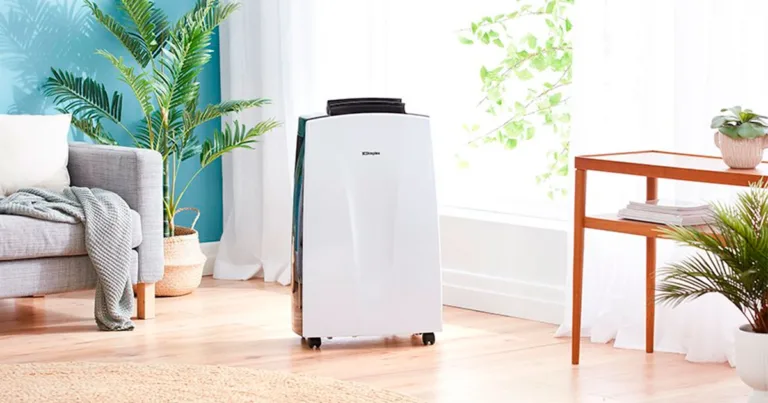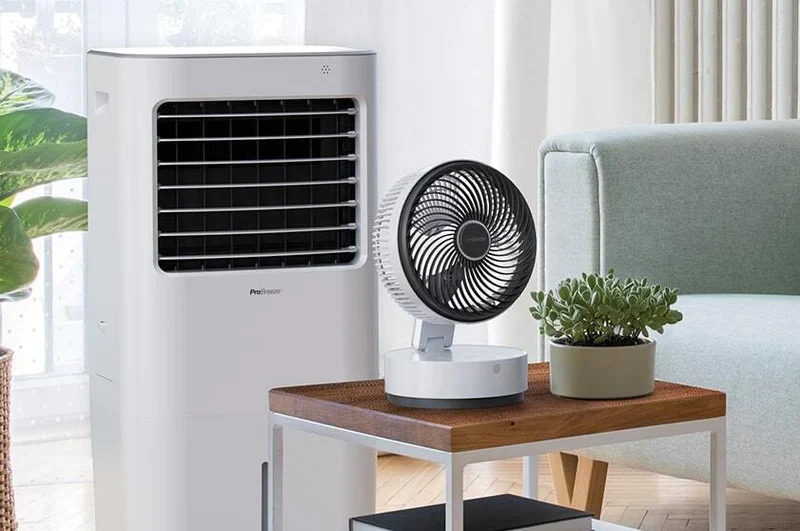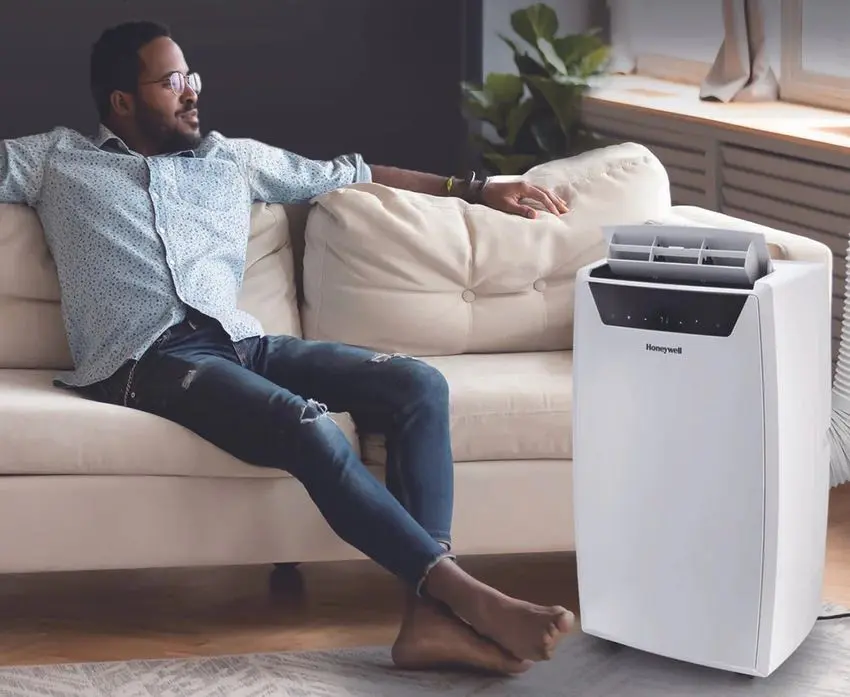When scorching summer days arrive or when a particular space lacks central cooling, a mobile air conditioner—often called a portable AC unit—can be a practical solution. Compact, user-friendly, and easy to move, these units allow you to keep spaces comfortable without undergoing complicated installations or structural changes. But with a multitude of models sporting various cooling capacities, energy-efficiency ratings, features, and price ranges, how do you pick the best mobile air conditioner for your needs?
In this detailed guide, we’ll cover everything you need to know before buying a mobile AC—from understanding British Thermal Units (BTUs) and venting options to noise levels, key features, and maintenance. By the end, you’ll be well-prepared to select a portable air conditioner that keeps you cool throughout the hottest months of the year.
1. Understanding the Basics of Mobile Air Conditioners
a) What Are Mobile (Portable) Air Conditioners?
A mobile or portable air conditioner is a self-contained cooling system. It typically sits on the floor, has wheels or casters for ease of movement, and vents heat through a window or opening using an exhaust hose. Unlike a window AC, it doesn’t fully integrate into a window frame; instead, you just install the exhaust vent kit, and you can relocate the unit to different rooms as needed (within reach of a suitable window or venting point).
b) How They Work
Similar to traditional air conditioners, portable units draw in warm air, remove heat and moisture, and then release the cooled air back into the room. The excess heat is vented outdoors through the exhaust hose, while collected moisture typically evaporates internally or is drained via a reservoir or continuous drainage option.
c) Reasons to Consider a Portable AC
- No Permanent Installation: Ideal for renters or those who don’t want to modify walls or windows.
- Flexible Placement: You can move the unit to different spaces—like a bedroom at night and a living area during the day.
- Supplemental Cooling: In homes where central air doesn’t fully reach certain hot spots, a portable AC can help.
- Seasonal Use: If you only need cooling for a few weeks or months, a portable unit is simpler to store away compared to permanent AC setups.

2. Cooling Capacity: Understanding BTUs
a) Importance of BTU Rating
One of the most critical specs for a mobile air conditioner is its BTU (British Thermal Unit) rating. BTUs measure the cooling power—the higher the BTUs, the larger the space the unit can cool effectively. Common BTU ratings for portable ACs range from around 5,000 to 14,000 BTUs (sometimes the newer DOE standards also show a “seasonally adjusted cooling capacity” that might list a slightly lower number—be mindful to compare consistent measures).
If you choose a unit with insufficient BTUs for your room, it will struggle to cool the space and waste energy by running constantly. On the other hand, too high a BTU rating for a tiny room can lead to quick cycling, incomplete dehumidification, and higher costs.
b) Estimating the Right BTUs for Your Space
As a rough guide, you need about 20–25 BTUs per square foot of floor area (assuming standard ceilings around 8 feet). For instance:
- 100–150 sq. ft.: ~5,000–6,000 BTUs
- 200–300 sq. ft.: ~8,000–10,000 BTUs
- 300–500 sq. ft.: ~10,000–12,000 BTUs or more
- 500–700 sq. ft.: ~12,000–14,000+ BTUs
However, factors like insulation, ceiling height, sunlight exposure, and climate can alter these requirements. If your room gets a lot of direct sunlight or if it’s poorly insulated, consider sizing up slightly.
c) Additional Room Factors
- Room Function: A kitchen or home office with heat-generating appliances or electronics might need a higher BTU rating.
- Number of Occupants: More people in the room generate more body heat, affecting cooling load.
- Ceiling Height: If you have high or vaulted ceilings, you’ll need more capacity than a standard 8-foot ceiling assumption.
3. Single-Hose vs. Dual-Hose Design
a) Single-Hose Portable ACs
Single-hose models expel hot air through one exhaust hose. However, they also draw some air from the room itself to cool the internal components, creating a slight negative pressure in the space. This can result in warm air infiltrating from adjacent rooms or outdoors.
- Pros: Cheaper, simpler, lighter in weight.
- Cons: Less efficient overall, potential negative pressure issues, might struggle in very hot or large areas.
b) Dual-Hose Portable ACs
Dual-hose systems separate intake and exhaust: one hose pulls outside air to cool the condenser, and the other expels the hot air outside. This setup avoids creating negative pressure.
- Pros: Higher efficiency, faster cooling in bigger or hotter rooms.
- Cons: Generally more expensive, slightly more complex to install with two hoses.
If efficiency and quicker cooling are key, consider a dual-hose model. However, for smaller rooms or occasional use, a single-hose might suffice if budget is a priority.
4. Energy Efficiency and EER/CEER Ratings
a) The Importance of Efficiency
Cooling can be energy-intensive, and portable AC units aren’t typically as efficient as window or split systems. That said, some are better than others:
- EER (Energy Efficiency Ratio) measures the ratio of cooling output (BTUs) to power usage (watts). A higher EER indicates better energy efficiency.
- CEER (Combined Energy Efficiency Ratio) is a more comprehensive measure, factoring in standby power consumption and usage patterns.
b) Look for ENERGY STAR Label
If available in your region, ENERGY STAR-certified portable air conditioners meet specific energy efficiency benchmarks, helping you save on electricity bills. Checking the label or manufacturer’s website can give an approximate annual energy cost estimate.
c) Operation Modes
Some units have an Eco Mode or Sleep Mode that adjusts cooling cycles to save energy while maintaining a moderate comfort level. For example, Sleep Mode might let the temperature drift slightly higher overnight.

5. Ventilation and Exhaust Setup
a) Window Vent Kits
All portable ACs require venting hot air out of the room. Typically, they include a window kit—an adjustable panel that fits into a window opening with a hole for the exhaust hose. Ensure your window style (horizontal vs. vertical sliding) is compatible, or check if the kit can be adapted to casement windows.
b) Minimal Gaps or Leaks
A well-sealed vent installation prevents warm air from re-entering the cooled space. Gaps around the vent kit or exhaust hose reduce efficiency. Weatherstripping or extra foam can help seal potential gaps.
c) Alternative Venting Options
If you can’t use a window, some users vent through a sliding door or a dedicated wall vent. Ensure the hose route is as direct and short as possible to reduce resistance and improve efficiency.
6. Condensate Management and Dehumidification
When cooling air, AC units also remove moisture. Portable ACs handle this condensate in different ways:
- Self-Evaporative: Many modern units automatically evaporate most moisture and exhaust it outside, requiring minimal manual draining.
- Partial Evaporation with Reservoir: Some water evaporates, but excess collects in an internal tank. You must periodically empty it, especially in humid climates.
- Continuous Drain: A hose connection allows water to drain away constantly (via gravity) if placed near a floor drain or out a window.
Additionally, some portable ACs have a dehumidify mode for times you only need moisture removal without much cooling. Confirm the water removal capacity if humidity is a major concern.
7. Noise Levels
a) Expected dB Range
Portable air conditioners generate noise from their compressor and fan. Typical noise levels might range from 45 to 60 decibels. Quieter models can stay around the low 50s or even upper 40s, akin to a normal conversation or a refrigerator hum. Extremely quiet models often come at a higher price.
b) Where It Matters Most
If you plan to place the unit in a bedroom or office where noise can be a distraction, search for user reviews or official decibel ratings indicating quieter operation. Some units feature a sleep mode that reduces fan speed and compressor cycling for lower noise at night.
8. Controls, Features, and Smart Connectivity
a) Controls and Display
Basic portable ACs have manual or digital control panels letting you set temperature, fan speed, and mode (cool, fan-only, dehumidify). Higher-end models include:
- Digital Thermostat: Precisely set the desired temperature.
- Timer: Schedule on/off times to save energy.
- Remote Control: Adjust settings from across the room.
- Touch Panel or LED Display: For easy reading of temperature and mode.
b) Smart / Wi-Fi Connectivity
Some modern units connect to home Wi-Fi, allowing you to control temperature and modes via a smartphone app or voice assistants like Amazon Alexa or Google Assistant. This can be convenient if you want to turn on the AC before arriving home or monitor usage from anywhere.

9. Physical Dimensions and Mobility
a) Dimensions and Weight
Portable ACs can be 2–3 feet tall, up to 1–1.5 feet wide, and weigh between 50–80 pounds or more. Check your available space and be sure the unit can fit near a window for proper venting.
b) Portability
Almost all units have caster wheels to roll them across flat floors, but moving them up/down stairs can be challenging. If you plan to relocate the AC frequently within the same level, ensure the wheels roll smoothly and the handle or grip is sturdy.
c) Aesthetics
While function often outweighs form, the style or color might matter if the unit is prominent in a living space. Portable ACs commonly come in white, black, or grey, so pick one that complements your décor if aesthetics is a factor.
10. Maintenance and Cleaning
a) Air Filters
Portable ACs have filters to catch dust and particles. These filters must be cleaned regularly—often removable and washable. Ensure the design makes filter removal easy.
b) Water Tank or Drain Line
If your AC accumulates water in a reservoir, you’ll need to empty it occasionally—maybe daily in very humid conditions. Check the tank’s capacity and ease of access. For continuous drain setups, confirm the included drain hose length or if you need to purchase separately.
c) Annual Coil Cleaning
Over time, dust might accumulate on the condenser/evaporator coils. Some manufacturers suggest annual or semi-annual cleaning for optimal performance. A well-designed model should have straightforward instructions for this process.
11. Budgeting and Price Range
a) Typical Price Points
Portable AC units can range from around $200 to $600+ depending on features, cooling capacity, brand, and technology. Premium models with advanced smart connectivity or dual-hose systems can approach the higher end.
b) Operating Costs
Beyond the purchase price, factor in electricity usage—higher BTU or less efficient units will draw more power. Choosing an efficient model with a higher EER rating can reduce monthly bills, which is especially important if you’ll be running the unit frequently.
c) Warranties
Many portable ACs come with a 1-year warranty for parts and labor, plus additional coverage for the compressor. Look for a brand known for good customer service. Extended warranties may be offered, but weigh their cost versus potential repair scenarios.
12. Brand Reputation and Reviews
a) Reliable Brands
Some well-known brands in the portable AC market include Honeywell, De’Longhi, Whynter, LG, Frigidaire, Black+Decker, and Haier. While brand name alone isn’t everything, these companies generally have more consistent quality and better parts availability.
b) Real-World User Feedback
Check user reviews on retail sites or consumer review platforms. Pay special attention to repeated complaints (e.g., “drain leaks,” “loud compressor,” or “inaccurate thermostat”) or praises. Searching for issues related to your local climate can also be helpful—some ACs handle high humidity better than others.
c) Professional or Consumer Reports
If available, read third-party testing or consumer advocacy group reviews. They often measure real cooling capacity, energy usage, and noise in controlled environments, providing an unbiased comparison.

13. Special Considerations for Specific Needs
- Small Rooms or Apartments: A 8000–10000 BTU single-hose model might suffice, focusing on a smaller footprint and quieter operation.
- Allergy or Air Quality: Some models include built-in air purifiers, ionizers, or advanced filtration. While not as robust as a dedicated air purifier, these can help remove some dust or allergens.
- High Humidity Environments: A powerful dehumidification feature or reliable continuous drain option can prevent frequent water tank emptying.
- Multi-Room Solutions: If you plan to move the unit around daily, ensure the portability is truly convenient. Alternatively, consider multiple smaller units or a single robust unit for your main living area plus a separate solution (like a window AC) for bedrooms.
14. Installation Tips
- Location: Place the unit near a window that fits the exhaust hose kit. Keep the hose as short and straight as possible to maximize efficiency.
- Outlet: Ensure the AC’s power cord can reach a suitable power outlet without an overly long extension cord, which can be a fire hazard. Some high BTU models need a dedicated 15–20 amp circuit.
- Window Kit Assembly: Measure your window dimensions carefully and cut or adjust the sliding panel so it seals tightly. Add foam padding to block air leaks.
- Check Tilt: Some models recommend a slight backward tilt so condensate can flow out properly. Follow the manufacturer’s guidelines.
15. Conclusion
Selecting the optimal mobile air conditioner involves balancing cooling capacity, efficiency, noise level, and ease of installation in a device that meets your specific space and usage patterns. Start by gauging the room size and required BTUs, then consider whether a single- or dual-hose design better suits your environment. Efficiency ratings and effective venting setups can drastically influence your comfort and energy costs, so pay attention to EER/CEER numbers and how you’ll install the exhaust hose. If convenience is key, look for built-in features like remote or smart app control, easy drain systems, or portable designs that simplify moving the unit around.
By carefully evaluating these considerations—BTU rating, hose configuration, noise output, brand reputation, and budget—you’ll be well equipped to find a portable AC unit that transforms hot, stuffy rooms into cool oases. From small bedroom retreats to larger living areas, a well-chosen mobile air conditioner can make all the difference when temperatures soar, offering relief without the commitment or complexity of permanently installed solutions. With proper setup, maintenance, and a bit of research, you can enjoy a comfortable climate no matter where you live.
